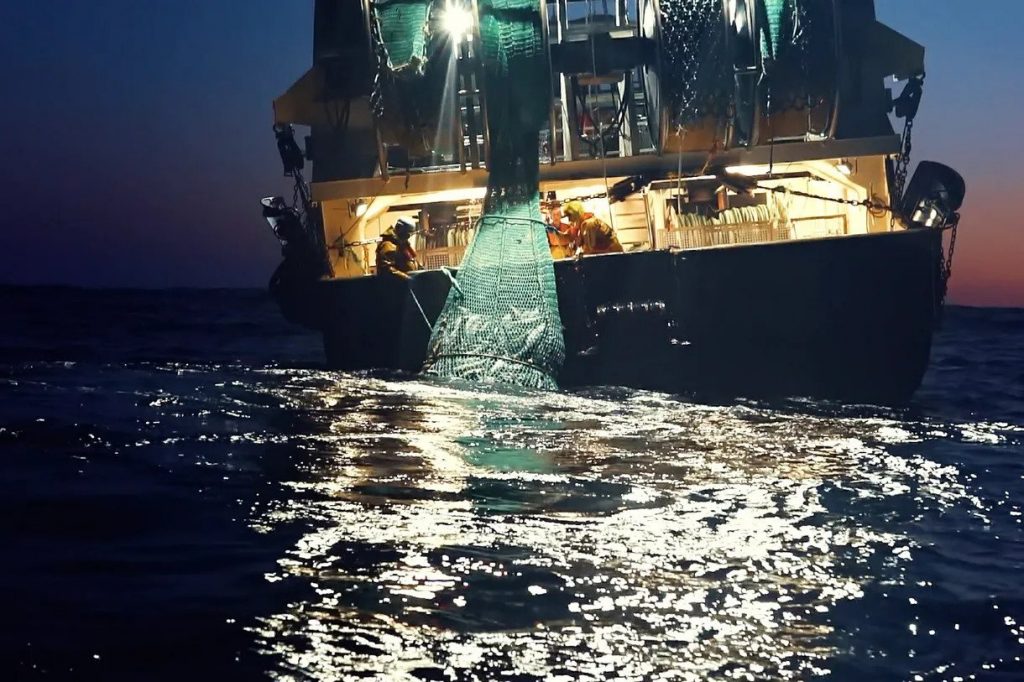If you haven’t been living under a rock, then there’s a good chance you’ve heard of the Netflix documentary “Seaspiracy,” which currently boasts a rating of 8.2 out of 10 on IMDb and a 75 percent rating on Rotten Tomatoes. Within 48 hours of its release in late March, the film hit the top 10 in both the United States and the United Kingdom on Netflix. “Seaspiracy” follows British filmmaker Ali Tabrizi and his team as they travel to different regions of the world to shed light and bring awareness to the environmental impact of fishing.
The 90-minute film starts out as a nature documentary to uncover the cause and effects behind whale strandings, but soon takes a dark turn as Tabrizi journeys across Asia and Europe, attempting to expose the illegal fishing markets which have a profound, concealed system of corruption, slavery and fraud involving big-name industries and even government backup. Despite receiving praise for directing attention to this overlooked issue, the documentary faces controversy surrounding its scientific accuracy.
Speaking of downfalls of the film, a major concern raised by critics involves racial tropes and the lack of diversity in interviewees. Brian Kahn wrote for Gizmodo that Tabrizi paints Asians as the “bad guys,” referring to “Japanese whale and dolphin hunters and Chinese consumers of shark fin soup.” The “good guys,” on the other hand, “are mostly white.”
In the same article, Kahn also brought up how in one scene off the coast of Liberia, Tabrizi and crew is about to intercept an illegal Chinese fishing boat, when they spot two Liberian men in a canoe hunting for food. At this point, they are very far away from the shore, and it’s almost pitch black outside. The documentary merely depicts people like the Liberian men as “victims of commercial and illegal fishing rather than engaging them as subjects in the debate,” according to Kahn. With over 3 billion people worldwide relying on food from the ocean as a significant source of protein, “Seaspiracy” fails to address the nuance surrounding veganism, Tabrizi’s proposed solution, as a privilege.
Another concern of the documentary is about whaling in the Faroe Islands, dubbed “the Grindadráp” or “the Grind.” During this seemingly inhumane occurrence, long-finned pilot whales are beached and then slaughtered. When I first saw this scene, I was appalled and to be honest, tears were shed. However, an interview with a Faroese whaler presented a perspective I had never considered before. Jens Mortan Rasmussen explained to Tabrizi his reason for participating in these whale hunts, stating that he believes he is not a bad person and in actuality, is even better than most other people.
“I would rather kill one whale than 2,000 chickens,” Rasmussen said. “That’s about the same amount of meat … For me, a fish, a chicken, a whale, exactly the same value. It has one life.”
Additionally, he compares his killing of one whale to a family who’s eating salmon for dinner and killing two salmon. Personally, I had to take a few moments to process this and sit with it, and I came to the conclusion that I agree. It’s undeniable that people kill animals for consumption, and while some choose to be vegetarian or vegan, others are unable to or simply choose to eat meat. But, what distinguishes people like Rasmussen is the fact that they kill with a certain respect for the animal. Indigenous tribes, such as the Inuit, share this same sentiment, typically honoring and cherishing the animals they hunt.
Interestingly enough, before its debut, “Seaspiracy” was branded as “vegan propaganda” by the fishing industry. It’s understandable, though, considering they are the primary group under fire. After the release of the documentary, some organizations and individuals interviewed or negatively portrayed in the film have come forward, accusing the film of misrepresenting them. This shouldn’t come as a surprise to anybody and Tabrizi and his team expected this, considering the heavy and bold assertions they made against companies like the nonprofit organization Earth Island Institute.
On that note, it’s important to confront the attitude of the narrator throughout the documentary. Tabrizi narrates with a sense of urgency and a tone that radiates “trust me” energy. Because of this, many uneducated individuals fell victim to believing every word he said, myself included. To be clear, this is not to discredit the audience or defend organizations like the Earth Island Institute. “Seaspiracy” is an intricate reminder that we should always watch, listen and read with a critical eye and not fall into the trap of authority bias. “Seaspiracy” is a documentary everyone should see. It has audibly triggered an imperative conversation, serving as a wake-up call that we must strive to reduce our fish consumption, given the detrimental repercussions commercial fishing has on the planet.



